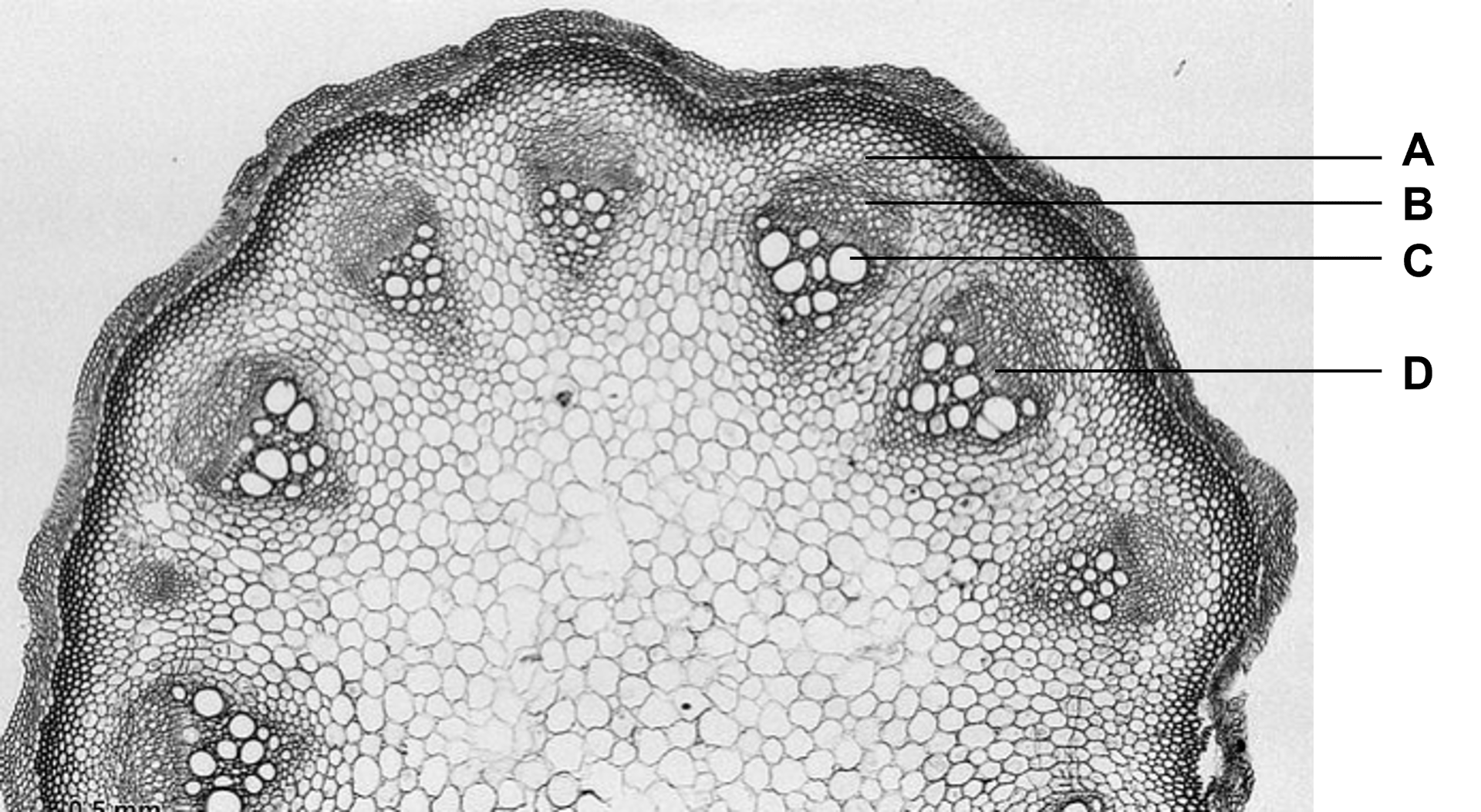The movement of phloem sap is an active process.
Which of the following is the most suitable explanation for this?
Phloem sap flows from the source to the sink.
ATP is required to load organic compounds into the phloem at the source.
Water leaves the phloem sieve tube at the sink.
Water moves into the phloem at the source by osmosis.
Choose your answer A B C D
View Answer
Next Question
Which of the following is not a structural feature of phloem tissue?
Lignified cell walls to withstand the hydrostatic pressure.
Columns of sieve tube cells.
Companion cells containing cell components that facilitate the loading and unloading of organic compounds.
Sieve plates with pores allows for the continuous movement of organic compounds.
Choose your answer A B C D
View Answer
Previous Question Next Question
Which of the following aphid characteristics makes them suitable to use when investigating phloem transport rates?
Phloem sap makes up the bulk of their diet.
They have specialised mouthparts called stylets.
The stylet can be easily severed during investigations.
Their mouthparts are able to pierce through plant tissue to reach the phloem.
Choose your answer A B C D
View Answer
Previous Question Next Question
The micrograph below shows part of a cross section of a plant stem.
Which of the structures A -D represents the xylem tissue?
Image courtesy of Doc. RNDr. Josef Reischig, CSc. Licensed under Creative Commons Attribution-Share Alike 3.0 Unported license. Reused and distributed under conditions found at: https://creativecommons.org/licenses/by-sa/3.0/
Choose your answer A B C D
View Answer
Previous Question Next Question
Which row correctly identifies a structure and its related function in a companion cell ?
Structure Function
A. Many mitochondria present
Translation of polypeptides that will form cell surface membrane proteins
B. Nucleus and cell organelles
Carrying out the cell processes of the sieve tube cells
C. Plasmodesmata
Linking adjacent companion cells with each other
D. Small amount of cytoplasm present
Facilitating the movement of assimilates
Choose your answer A B C D
View Answer
Previous Question
